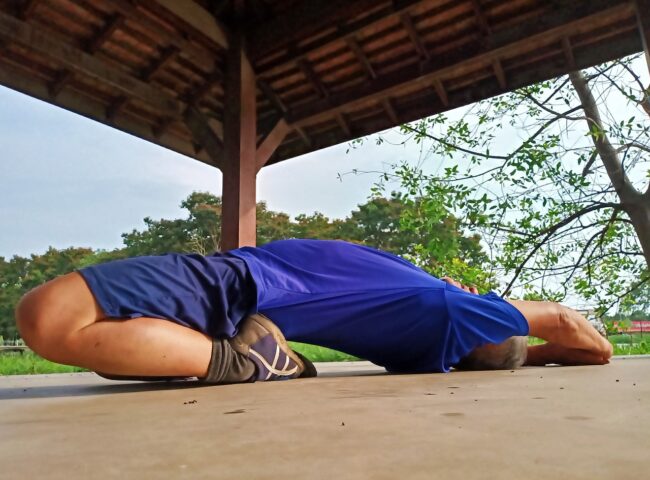Elevate your well-being with mindfulness meditation techniques for wellness. Discover inner balance and peace through these effective mindfulness practices. Start your journey to holistic health today.
Cultivating Tranquility: Mindfulness Meditation Techniques for Wellness
In a world filled with constant stimuli, finding moments of inner calm and balance is a precious gift. Mindfulness meditation offers a powerful practice to achieve not only mental clarity but also holistic wellness. In this article, we’ll explore a range of mindfulness meditation techniques that have the potential to transform your well-being, helping you navigate life’s challenges with greater resilience and serenity.
1. Breath Awareness Meditation
Begin your mindfulness journey with breath awareness meditation. Find a quiet space, sit comfortably, and focus your attention on your breath. Observe each inhale and exhale without judgment, letting go of distractions and returning your focus to the present moment.
2. Body Scan Meditation
Body scan meditation involves directing your attention to different parts of your body, one at a time. Start from your toes and gradually move upward, noticing any sensations or tension. This technique promotes relaxation and body awareness.
3. Loving-Kindness Meditation (Metta)
Loving-kindness meditation cultivates compassion and positive emotions. Repeat phrases like “May I be happy. May I be healthy. May I live with ease,” directing them towards yourself and others. This practice fosters feelings of connection and well-being.
4. Guided Visualization Meditation
Guided visualization takes you on a mental journey to a peaceful place or scenario. Follow a recorded guide or create your own visualizations to engage your senses and promote relaxation.
5. Mindful Walking Meditation
Take your mindfulness practice outdoors with mindful walking. Focus on each step, the sensation of your feet touching the ground, and the rhythm of your breath. This technique enhances your connection to nature and the present moment.
6. Sound Meditation
Sound meditation involves focusing your attention on sounds around you. Whether it’s birdsong, the rustle of leaves, or the hum of a distant car, immerse yourself in the auditory experience without judgment.
7. Body Sensation Meditation
Similar to the body scan, this technique involves observing bodily sensations without attachment. Tune into any tension, discomfort, or relaxation you may feel, fostering a deeper connection to your physical self.
8. Mindful Eating Meditation
Transform your eating routine into a mindful practice. Engage your senses by savoring each bite, noticing textures, flavors, and aromas. Eating mindfully can lead to healthier eating habits and a greater appreciation for food.
9. Present Moment Awareness Meditation
The core of mindfulness is anchoring your awareness in the present moment. As thoughts arise, gently guide your focus back to your breath, sensations, or whatever is happening right now.
10. Gratitude Meditation
Reflect on moments of gratitude during this practice. Focus on the things you appreciate in your life, cultivating a positive outlook and promoting feelings of contentment.
11. Breath Counting Meditation
In breath counting meditation, focus on your breath while counting each inhale and exhale. Start from one and count up to ten, then begin again. If your mind wanders, gently return to counting. This practice enhances concentration and presence.
12. Body Movement Meditation
Mindfulness can extend to your physical movements. Engage in activities like yoga, Tai Chi, or simple stretching with full awareness. Feel the sensations, the stretch, and the release in each movement.
13. Noting Meditation
Noting meditation involves labeling your thoughts, emotions, and sensations as they arise. For example, if you notice your mind wandering, silently label it as “thinking” before returning to your focus. This technique fosters detachment and observation.
14. Open Awareness Meditation
Instead of focusing on a specific object, expand your awareness to include everything around you. Embrace the totality of your experience, from sounds to sensations to thoughts, without fixating on any one element.
15. Compassion Meditation
Compassion meditation extends loving-kindness to others. Focus on a person in your life and silently offer phrases like “May you be happy. May you be healthy. May you live with ease.” This practice promotes empathy and connection.
16. Emotion Regulation Meditation
During this practice, acknowledge your emotions without judgment. Sit with whatever feelings arise, allowing them to come and go without resistance. This technique can enhance emotional intelligence and self-acceptance.
17. Mantra Meditation
Choose a word or phrase that holds significance for you and repeat it silently or aloud. Mantra meditation can help quiet the mind and induce a state of deep focus and relaxation.
18. Mindful Breathing Techniques
Explore different mindful breathing techniques, such as square breathing (equal length inhalation, hold, exhalation, and hold) or 4-7-8 breathing (inhale for 4, hold for 7, exhale for 8). These techniques help regulate your breath and calm your nervous system.
19. Mindfulness in Daily Tasks
Extend mindfulness to daily activities like washing dishes, brushing your teeth, or taking a shower. Engage fully in each task, noticing sensations, movements, and the experience without rushing.
20. Evening Reflection Meditation
At the end of your day, practice an evening reflection. Sit quietly and review your day without judgment. Acknowledge moments of gratitude, challenges, and accomplishments. This practice helps you end your day with mindfulness and self-awareness.
These additional mindfulness meditation techniques expand your toolkit for cultivating well-being and presence. Each technique offers a unique approach to experiencing the present moment and nurturing your inner peace. As you explore these practices, remember that mindfulness is a flexible and adaptable journey. Choose techniques that resonate with you and weave them into your daily routine to foster a greater sense of clarity, calmness, and connection. With consistent practice, you’re embarking on a path of self-discovery and self-care that can lead to profound transformation in your overall wellness and quality of life.
Mindfulness meditation is a transformative tool that empowers you to nurture your well-being from within. Through these techniques, you have the opportunity to enhance self-awareness, reduce stress, and embrace a more balanced and fulfilling life. Remember that mindfulness is a journey, not a destination. Be patient with yourself as you explore these practices, and embrace each moment as an opportunity for growth and self-discovery. By incorporating mindfulness into your daily routine, you’re investing in your mental, emotional, and physical wellness, creating a foundation for lasting happiness and inner peace.







Leave feedback about this